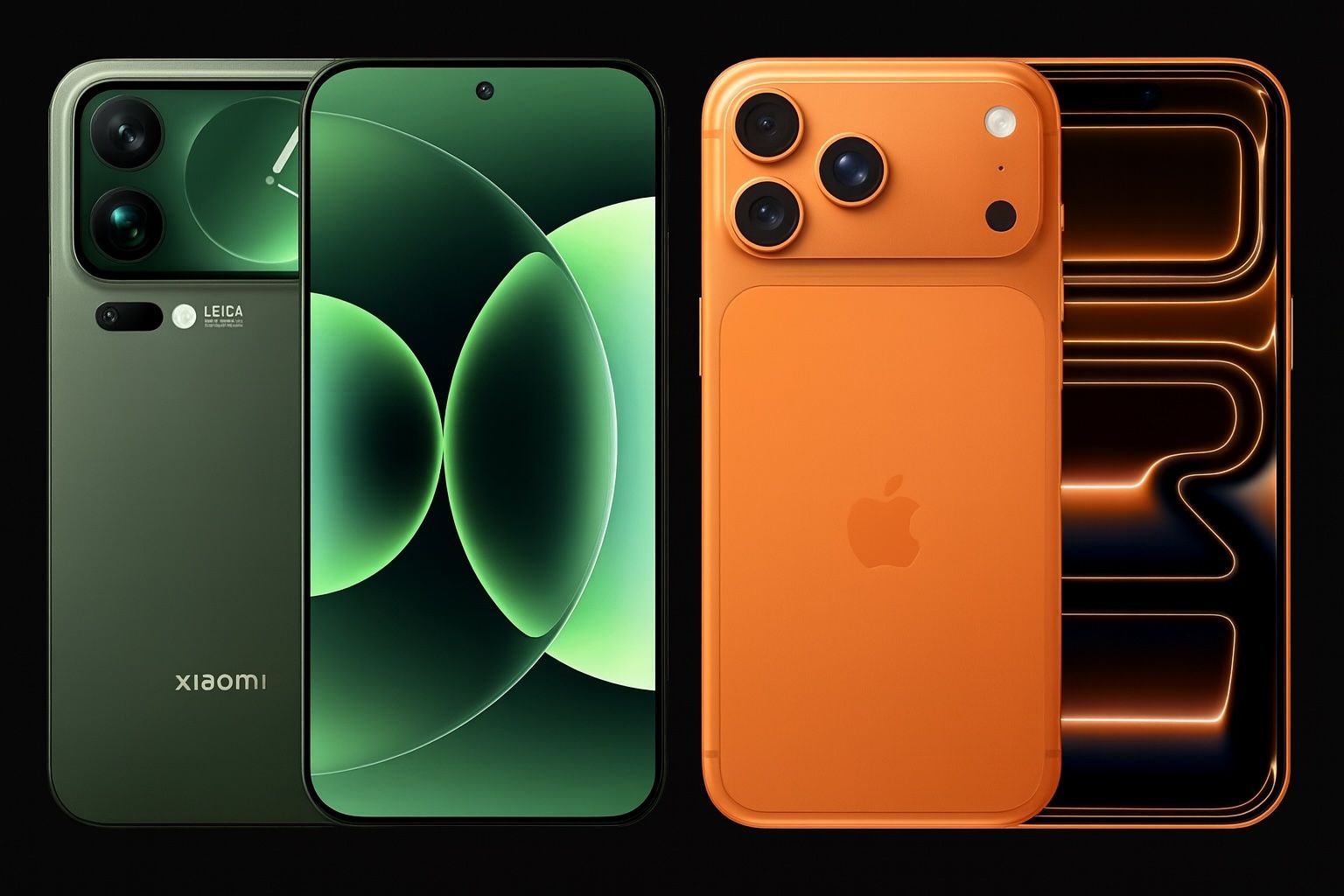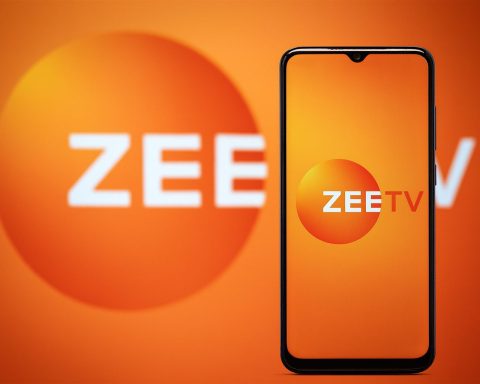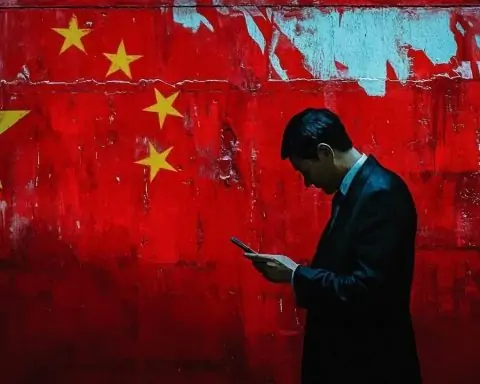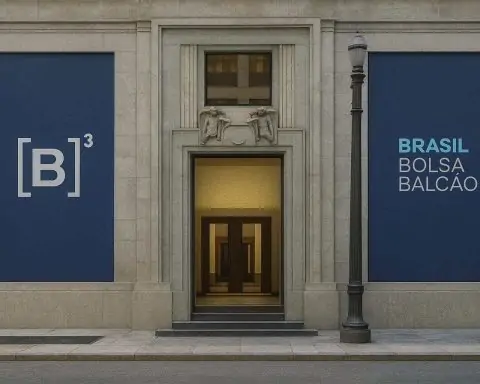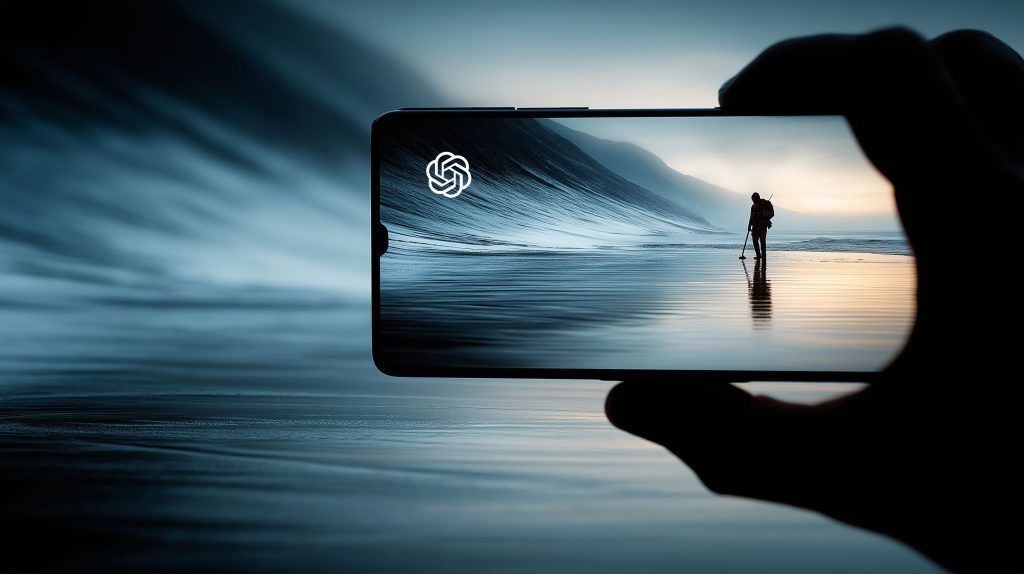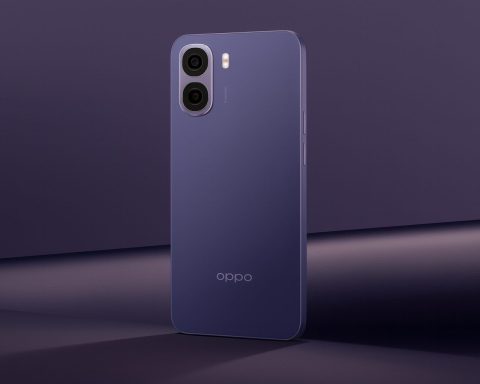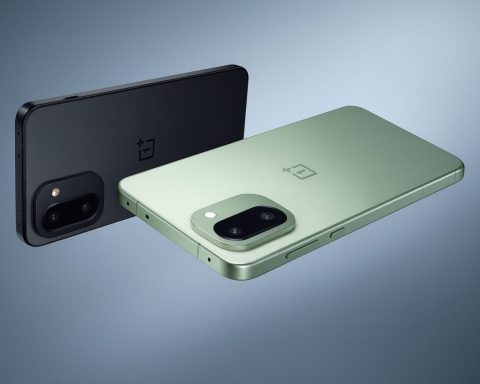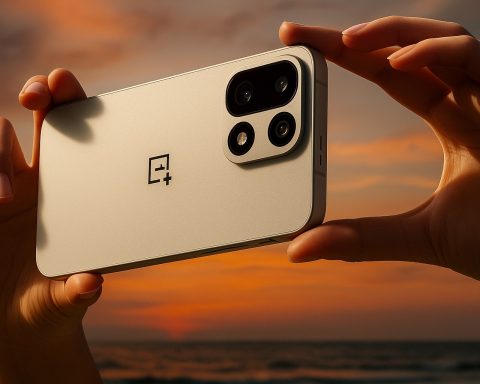- Second Screen Showdown: Xiaomi’s new 17 Pro Max brings a 2.7-inch secondary display on its back for notifications, music controls, and selfie previews – a novelty no iPhone or Galaxy offers [1] [2]. This “Dynamic Back Display” sits where the iPhone’s camera bump would be, giving Xiaomi an interactive twist that Apple’s iPhone 17 Pro Max lacks. (As one reviewer quipped, “We don’t need a second screen, but I’m already using it more than I expected to.” [3])
- Battery Beast vs Battery Boost: The Xiaomi 17 Pro Max is a true “battery monster” with a colossal 7,500 mAh cell, dwarfing the iPhone 17 Pro Max’s ~5,088 mAh battery [4] [5]. Xiaomi claims marathon endurance – even strapping a 5,000 mAh pack to an iPhone in tests to prove the Xiaomi still lasts longer [6]. Fast charging favors Xiaomi too: 100W wired (50W wireless) can refill it in a flash, whereas Apple’s best is 40W wired (about 50% in 20 minutes) [7] [8]. Apple counters with efficiency; thanks to the new chip and iOS optimizations, the iPhone 17 Pro Max offers the best battery life ever in an iPhone (up to 39 hours video playback) [9] [10] – but Xiaomi is clearly aiming to one-up that stamina.
- Raw Power – Snapdragon vs A19 Pro: Xiaomi is first to launch Qualcomm’s latest Snapdragon 8 Elite Gen 5 chip, paired with up to 16 GB RAM, putting it on the bleeding edge of Android performance [11]. Notebookcheck even calls this chip “perhaps the fastest smartphone chip in the world.” [12] Apple’s iPhone 17 Pro Max fires back with Apple’s own A19 Pro chipset – a 6‑core CPU and 6‑core GPU with hardware ray tracing – delivering “the fastest CPU in any smartphone” according to Apple, along with 40% better sustained performance than last year [13] [14]. Both phones pack cutting-edge cooling (vapor chambers in the iPhone’s new aluminum unibody, advanced cooling design in the Xiaomi) to sustain high performance [15] [16]. In short, these are two of 2025’s most powerful phones, ready for high-end gaming and AI tasks – with Xiaomi’s silicon muscle going head-to-head against Apple’s famously optimized chips.
- Camera Capabilities: Xiaomi teamed up with Leica for its camera system, equipping four 50 MP sensors (yes, even the selfie camera is 50 MP) across the 17 series [17]. The 17 Pro Max’s trio includes a wide f/1.67 main, ultra-wide, and a 5× periscope telephoto lens – with the Pro Max getting a larger sensor and brighter f/2.6 aperture for better zoom in low light [18]. Apple’s iPhone 17 Pro Max answers with three 48 MP “Fusion” cameras (main, ultra-wide, telephoto) and introduces a next-gen tetraprism telephoto that achieves an 8× optical-quality zoom – the longest ever on an iPhone [19] [20]. In practice, Apple uses a 48MP sensor crop to emulate 8× zoom with optical quality [21], while Xiaomi uses a dedicated periscope lens at 5×. Both flagships promise excellent imaging: Apple leans on its computational photography and pro video features (ProRes RAW, Apple Log for filmmakers) [22] [23], whereas Xiaomi offers the Leica color tuning and even a 30 cm tele-macro ability on that periscope for up-close detail [24]. Selfie lovers get a unique perk on Xiaomi – you can use the superior rear cameras for selfies via the back screen viewfinder [25] – something not possible on the iPhone.
- Design: iPhone DNA with a Xiaomi Twist: At first glance, the Xiaomi 17 Pro Max looks a lot like an iPhone 17 Pro Max – a flat 6.9-inch OLED display, shiny aluminum frame, and even the model naming mimic Apple’s (Xiaomi literally skipped “16” to align with 17!) [26]. Xiaomi’s interface HyperOS 3 also borrows from iOS 26’s design language, down to a new “HyperIsland” feature that mirrors Apple’s Dynamic Island for alerts [27]. As PhoneArena noted, Xiaomi’s software “looks extremely similar to iOS 26” and even its phones “look like the iPhone 17 Pro” [28] [29]. Critics call it “blatant iPhone 17 copying” [30] [31] – yet Xiaomi isn’t shy about it. The company says it wants comparisons with Apple, even proclaiming “we are directly competing with the iPhone at the same level” [32]. Apple’s design, for its part, got a refresh this year: the iPhone 17 Pro line moved to a tough Ceramic Shield 2 glass (front and back) with a new “plateau” camera bump design and slightly rounded aluminum edges [33] [34]. Notably, Apple maximized internal space for a bigger battery by using a hollowed aluminum frame and vapor cooling [35] [36]. Xiaomi takes a different approach to stand out: that second rear screen. By integrating a mini display into the camera island, Xiaomi turned what’s usually dead space into a functional feature [37] [38]. It’s a bold move that “fills the space where Apple’s camera plateau sits” with something useful [39], and it certainly has people talking.
- Price & Value Proposition: Xiaomi’s aggressive strategy isn’t just in design – it’s in pricing. In China, the 17 Pro Max starts at ¥5,999 (around $840) [40], hundreds less than Apple’s $1,199+ price for the iPhone 17 Pro Max [41]. In fact, Xiaomi’s top model undercuts even Apple’s base-model iPhone 17, despite Xiaomi packing in higher-end hardware like the second screen and more base storage [42]. “We are offering a $630 answer to iPhone 17” Xiaomi’s co-founder Lei Jun declared of the base Xiaomi 17 [43]. Of course, Apple justifies its premium with the polish of iOS, the robust app ecosystem, and features like long software support and deep integration with other Apple devices. Still, Xiaomi is signaling that flagship-level tech need not cost $1000+, at least if you’re willing to buy outside the Apple walled garden. The caveat: for now the Xiaomi 17 series is China-only (as of late 2025) [44]. A global launch is expected in early 2026 (likely around the MWC trade show), bringing these phones to Europe and beyond [45]. U.S. availability is unlikely due to ongoing bans on many Chinese phones [46], meaning American enthusiasts would have to import at their own risk. Apple’s iPhone 17 Pro Max, by contrast, is available widely across the globe (including the U.S.) from day one. Bottom line on price: Xiaomi delivers an astonishing spec sheet for the money, while Apple commands a steep premium – the classic value vs. luxury trade-off.
- Beyond Apple and Xiaomi – The Broader Flagship Battle: 2025’s smartphone arena is crowded with heavy-hitters. Samsung’s Galaxy S25 Ultra (launched earlier in the year) is another top rival: it sports a 6.9-inch display, a 5,000 mAh battery, and a headline-grabbing 200 MP camera, plus an S-Pen stylus – though its battery and charging (45W) don’t come close to Xiaomi’s behemoth specs [47]. Google’s new Pixel 10 Pro XL joins the fray with a 5,200 mAh battery and a 5× periscope telephoto of its own [48], emphasizing AI-driven features and photography software magic. In raw numbers, Xiaomi still wins on battery capacity and even matches or exceeds on camera hardware, while undercutting both Samsung and Google on price in its markets. Other contenders like OnePlus and Huawei are also vying for attention, but Xiaomi’s clear target was Apple’s crown. By skipping the “16” generation and launching the Xiaomi 17 series just weeks after Apple’s iPhone 17, Xiaomi staged a direct showdown [49] [50]. As The Verge observed, “the Chinese giant had Cupertino in mind” with almost every aspect of this launch [51]. Even Samsung’s upcoming Galaxy S26 (expected in early 2026) will have to contend with the narrative that Xiaomi set: that a flagship can offer maxed-out specs (and quirky innovations) for a lower price, if you don’t mind a design that unabashedly riffs off Apple’s.
Introduction: A New Challenger Approaches
When Xiaomi unveiled the 17 Pro Max in September 2025, it didn’t just launch another Android phone – it declared war on the traditional kings of the premium segment. Xiaomi’s CEO Lei Jun literally shared the stage with side-by-side comparisons to Apple’s latest devices, underscoring where he believes the Xiaomi 17 series has the upper hand [52] [53]. In an unprecedented (and cheeky) move, Xiaomi even skipped the number 16 entirely – leaping from last year’s Xiaomi 15 straight to Xiaomi 17 – explicitly to match Apple’s iPhone 17 naming [54] [55]. “The company even skipped a generation in naming, just so it could go head-to-head with Apple’s iPhone 17 series in both number and spirit,” one tech reviewer noted [56] [57]. Xiaomi’s President Lu Weibing was more direct, posting on social media: “We are directly competing with the iPhone in the same generation and at the same level.” [58] For Xiaomi, long a champion of high-value phones, the 17 Pro Max is a coming-of-age flagship intended to crack the premium market dominated by Apple and Samsung [59] [60].
Apple, meanwhile, released the iPhone 17 Pro and Pro Max as its most advanced iPhones ever, with a bold redesign and significant upgrades after years of more incremental changes. Both companies are essentially telling consumers: this is the best smartphone experience you can get in late 2025. Apple leans on its ecosystem and refined user experience; Xiaomi on raw specs and disruptive pricing. The result is a tantalizing Xiaomi 17 Pro Max vs. iPhone 17 Pro Max showdown – one that also ropes in the likes of Samsung’s Galaxy and Google’s Pixel as the heavyweights of the smartphone world.
In this in-depth report, we’ll compare everything that’s current about these devices – from design, displays and software, to performance, battery life, cameras, and pricing – drawing on the latest news and expert commentary. We’ll also touch on other upcoming models and competitors to paint the full picture of the flagship landscape.
Design & Display: Seeing Double (Screens)
There’s no denying it: at a glance, the Xiaomi 17 Pro Max looks eerily like an iPhone. “The Xiaomi 17 Pro Max has a very familiar ring to it,” one reviewer noted about Xiaomi’s unabashed mirroring of Apple [61] [62]. The Xiaomi 17 series sports a clean, flat-front design with slim bezels and an aerospace-grade aluminum frame – just like Apple’s latest iPhones. Xiaomi even adopted Apple-like model names (“Pro” and “Pro Max”) which it never used before, prompting PhoneArena to quip that they were “almost surprised there isn’t a Xiaomi 17 Air too.” [63] The similarities continue in software: Xiaomi’s new HyperOS 3 skin for Android 16 introduces a “HyperIsland” notification popup that is a deliberate clone of Apple’s Dynamic Island [64] [65], and an overall UI refresh that “looks extremely similar to iOS 26” [66]. From the shape of app icons to control center elements, Xiaomi is clearly taking inspiration from Cupertino.
But flip the Xiaomi 17 Pro Max over, and you’ll spot something no iPhone has – a second screen on the back. This is where Xiaomi’s design truly diverges. The iPhone 17 Pro/Max, instead of a camera “bump,” moved to a broad camera plateau on the back (a raised rectangular camera bar) [67] [68]. Xiaomi’s genius (or audacity) was to fill an equivalent camera plateau with a functional 2.7-inch AMOLED display [69] [70]. Nestled alongside the lenses, this secondary screen boasts an impressive 904×572 resolution, up to 120 Hz refresh, and 3,500 nits peak brightness [71] [72] – essentially smartphone-grade specs shrunk down to mini size. It’s not just for show: Xiaomi calls it the “Dynamic Back Display” and has given it plenty of jobs to do. When your phone is face-down, this rear panel can show you the time, incoming notifications, or music controls at a glance [73] [74]. It can display custom clocks or even animated virtual pets that react to your phone’s status (for example, a pet that looks sleepy when battery is low) [75] [76]. It doubles as a selfie mirror – activating the rear cameras so you can take high-quality selfies with the main camera and see yourself in the back display [77]. You can even pin QR codes or boarding passes to it, which is surprisingly handy for travel and tickets [78] [79]. And in one of the most whimsical additions, Xiaomi created a Retro GamePad case that snaps onto the phone, adding physical buttons and a D-pad, effectively turning the back screen into a tiny Game Boy for playing simple mini-games [80]. (It’s more fun gimmick than serious gaming device – as Wired joked, just because you can play Angry Birds on a 2.7-inch screen “doesn’t mean you should” [81] – but it’s a differentiator that no iPhone or Galaxy can match out-of-the-box.)
Apple’s design philosophy didn’t venture into secondary displays or wild add-ons – instead, Apple focused on refinement and durability in the iPhone 17 Pro line. The iPhone 17 Pro Max features a 6.9-inch Super Retina XDR OLED display, while the Xiaomi 17 Pro Max has a similar 6.9-inch AMOLED; both are high-resolution (QHD-class on Xiaomi, ~460 ppi on iPhone) and support up to 120Hz refresh with bright outdoor visibility (Apple touts 3000 nits peak brightness, Xiaomi’s main screen likely comparable) [82] [83]. Apple’s display is slightly curved at the corners and uses the second-gen Ceramic Shield 2 glass for improved scratch resistance and now also covers the back glass [84] [85]. Xiaomi uses Gorilla Glass (Victus or newer) – specifics aside, both screens are top-tier OLEDs you’d expect on a flagship, with vibrant colors and high brightness.
In terms of build, Apple returned to aluminum this year (after a brief affair with titanium on the iPhone 16 Pro) to help integrate a new vapor cooling system and keep weight manageable [86]. The iPhone 17 Pro Max weighs about 233g (8.2 oz) [87]. Xiaomi, despite the huge battery and second screen, managed to keep weight in check around ~240g range (exact weight not cited, but it’s described as relatively slim thanks to new battery tech) [88]. Both phones have premium build quality. Xiaomi offers colors like black or other finishes in China; Apple offers three new finishes this year: a deep blue, a bold cosmic orange, and a classic silver/white [89] [90] – notably, no more gold or black for the Pro iPhones this round.
One controversial aspect of Xiaomi’s design is just how far it goes to emulate Apple’s aesthetic. The camera layout on the Xiaomi 17 Pro/Max features two large lenses on the left and one smaller lens plus the screen on the right – a layout that intentionally echoes the iPhone 17 Pro’s new camera arrangement (two big lenses, one smaller, arranged on a plateau) [91] [92]. Xiaomi’s launch even mimicked Apple’s presentation style. The Verge remarked that “a critic might accuse Xiaomi of copying Apple a little too closely… [they] had Cupertino in mind” during the 17 series launch [93]. Xiaomi counters that behind the Apple-esque facade, it is delivering genuine innovation – pointing to that secondary display and the engineering feats of fitting a huge battery without making the phone a brick [94] [95]. In the end, design preferences are subjective: if you love the iPhone look but wish it did more, Xiaomi’s offering might appeal. If you prefer a phone that looks unique and runs a clean iOS, the iPhone still stands apart – after all, no matter how much Xiaomi makes Android look like iOS, it’s not actually iOS or in Apple’s ecosystem.
Performance & Battery Life: Horsepower and Longevity
Under the hood, these two flagships take very different silicon paths to achieve top-tier performance. Xiaomi 17 Pro Max is the world’s first phone to ship with Qualcomm’s Snapdragon 8 Elite Gen 5 processor [96]. This is Qualcomm’s latest 5 nm (or 3 nm) class chip for 2025, boasting new Oryon CPU cores up to 4.6 GHz and an upgraded Adreno GPU with features like Adreno HPM (on-chip memory), tile memory optimizations, and support for advanced graphics techniques (mesh shading, Unreal Engine 5 optimizations) [97] [98]. It’s a mouthful of tech jargon, but essentially this Snapdragon aims to deliver PC-like gaming performance on mobile with better efficiency. Early impressions have been positive – Notebookcheck called it “perhaps the fastest smartphone chip in the world” at launch [99], and Xiaomi pairs it with up to 16 GB of RAM and an advanced cooling system to sustain those speeds [100]. That means the Xiaomi can handle anything you throw at it: heavy 3D games, multitasking, or even mobile productivity and AI tasks (the chip likely has a beefed-up NPU for AI, though Apple still leads in dedicated neural engine power).
On the other side, the iPhone 17 Pro Max is powered by Apple’s in-house A19 Pro chip – which Apple touts as “the most powerful and efficient iPhone chip ever.” [101] [102] Built on a cutting-edge 3 nm process, the A19 Pro features a 6‑core CPU (2 high-performance + 4 efficiency cores) and a 6‑core Apple GPU that now includes Neural Accelerators in each core [103] [104]. Apple’s tight integration of hardware and software often gives it an edge in real-world speed and responsiveness. In fact, Apple claims the CPU is the fastest in any smartphone and the new GPU enables features like hardware-accelerated ray tracing for games [105] [106]. Perhaps more importantly, Apple’s chip is optimized for low-power performance – a big contributor to the excellent battery life improvements this year. The iPhone 17 Pro Max’s design also includes a laser-welded vapor chamber cooling system to sustain performance under load [107] [108], which means the phone can run intensive tasks without throttling or overheating as quickly. Reviewers noted the iPhone 17 Pro Max “doesn’t get blazing hot” even during long gaming sessions, a welcome improvement over some previous iPhones [109] [110].
When it comes to battery life, Xiaomi simply went all-in on capacity. The 7,500 mAh battery in the 17 Pro Max is one of the largest ever in a mainstream flagship phone [111] – for context, that’s roughly 50% more capacity than most high-end phones (the Samsung S25 Ultra has 5,000 mAh, Google Pixel 10 Pro XL ~5,200 mAh) [112]. Xiaomi even uses a new silicon-carbon anode battery tech and an L-shaped battery design to fit this capacity without making the phone unwieldy [113]. The result? The Xiaomi 17 Pro Max is a battery endurance champ on paper. In a brazen demonstration, Xiaomi pitted it against an iPhone 17 Pro Max that had an extra 5,000 mAh MagSafe battery pack attached – and the Xiaomi still outlasted the boosted iPhone in a video playback test [114]. In typical use, you can expect the Xiaomi to easily go beyond a full day; heavy users might still have juice left by bedtime, and light users could stretch into two days on one charge. Moreover, Xiaomi’s charging tech is top-notch: 100W wired charging can recharge the 7,500 mAh cell extremely fast (likely around 0 to 100% in under 30 minutes in ideal conditions), and it supports 50W wireless charging which is faster than many competitors’ wired charging [115]. Essentially, Xiaomi alleviates battery anxiety with both brute capacity and speed.
Apple took a different approach – balancing a significant battery size increase with silicon efficiency. Thanks to the space freed by the eSIM-only design (no SIM tray) and the new internal architecture, the iPhone 17 Pro Max got a battery boost to ~5,088 mAh (about 8.6% larger than the 16 Pro Max’s battery) [116] [117]. That is the biggest battery ever put in an iPhone. Coupled with the A19 Pro’s efficiency and iOS optimizations, Apple claims up to 39 hours of video playback on the Pro Max, up from 33 hours on last year’s model [118] [119]. Real-world, that translated to noticeable gains: reviewers found the iPhone 17 Pro Max could go from morning to late night with plenty of charge left – one report had ~50% remaining at 8:43 PM after a day of moderate use [120] [121], a significant improvement that meant not needing a top-up where last year’s iPhone would have. In fact, The Verge called the battery life increase “significant” and noted they usually had to recharge the iPhone 16 Pro Max by evening, but the 17 Pro Max still had half a tank at that time [122]. Apple also upgraded charging a bit: the Pro models now support up to 40W wired charging, hitting 50% in ~20 minutes with Apple’s new 40W USB-C adapter [123]. It’s still far slower than Xiaomi’s 100W (and many Chinese flagships pushing 80W+), but it’s an improvement by Apple standards. MagSafe wireless is also slightly faster (up to 15W-20W range, Apple says 50% in 30 minutes on a 30W charger for the 17 Pro with MagSafe) [124]. So while Xiaomi clearly wins on raw battery specs, Apple’s optimization closes the gap to a point where both phones comfortably last a full day – Xiaomi simply gives you more cushion (with the trade-off of a heavier device).
One area that benefits from these performance and battery gains is gaming and AI. Xiaomi’s Snapdragon 8 Elite Gen 5, with its new GPU features, is built for sustained gaming performance. Likewise, Apple specifically mentioned the iPhone 17 Pro’s ability to run console-quality games and even emerging mobile AI applications (like local voice processing or image recognition) with its beefed-up Neural Engine and GPU [125] [126]. Neither phone is likely to leave you wanting for speed. If anything, this generation is about sustained performance without overheating or dying by afternoon – and both deliver. For bragging rights: Apple’s A-series chips historically dominate in single-core CPU and GPU efficiency, whereas Qualcomm often shines in multi-tasking, connectivity, and features like support for Wi-Fi 7 and advanced 5G modes (indeed, the Xiaomi 17 series will benefit from the Snapdragon X70/X75 5G modem, and Apple introduced a new N1 wireless chip for Wi-Fi 7 in the iPhone) [127]. Unless you’re cross-shopping platforms, the takeaway is both devices are future-proof powerhouses.
Cameras: Triple vs. Quad – Different Approaches to Pro Photography
For many buyers, the camera can make or break a flagship. Here, Apple and Xiaomi take different paths but both pack serious camera hardware.
Xiaomi 17 Pro Max continues Xiaomi’s partnership with legendary camera maker Leica. All three models in the 17 series (base, Pro, Pro Max) get a robust triple 50 MP rear camera system [128]. On the Pro Max, the primary camera is a 50 MP sensor with a bright f/1.67 lens (likely a large sensor for strong low-light performance), the ultra-wide is also 50 MP, and the telephoto is a 50 MP 5× periscope lens [129]. The difference between the Pro and Pro Max is that the Max’s periscope uses a larger sensor and wider f/2.6 aperture (vs f/3.0 on the 17 Pro), meaning it can gather more light and produce better zoom images in low light [130]. It even has a trick up its sleeve: the telephoto can focus at 30 cm for tele-macro shots, letting you get close-ups with 5× magnification – great for capturing detail on distant subjects or for creative macro photography [131]. On the front, Xiaomi didn’t skimp either: a 50 MP front camera means even selfies are high-resolution [132] (though one might often just use the rear cameras with the back screen for selfies, rendering the front cam less critical). With Leica’s input, Xiaomi’s camera app offers Leica-inspired color processing (typically a “Leica Authentic” and “Leica Vibrant” mode) which can give photos a distinctive look. Early reports praise the camera experience as top-notch – Xiaomi has been strong in camera hardware for years, and the 17 Pro Max is no exception [133] [134].
Apple iPhone 17 Pro Max, on the other hand, brings three 48 MP cameras, marking the second year Apple has gone beyond 12 MP sensors on the Pro iPhones. The main camera is 48 MP with an f/1.78 lens and second-gen sensor-shift stabilization [135] – similar to last year but likely with sensor improvements. The ultra-wide is 48 MP f/2.2 with a 120° field of view [136]. The big story is the new 48 MP Telephoto: Apple employed a tetraprism periscope design (a folded lens system) to achieve an effective 5× optical zoom (120 mm equivalent) and then, using the 48MP resolution, can crop in to deliver up to 8× “optical-quality” zoom (approx 200 mm equivalent focal length) [137] [138]. Apple calls this the longest optical-quality zoom ever on an iPhone [139]. Essentially, at 8× zoom the iPhone 17 Pro Max is cropping into the center of that 48MP telephoto sensor to get a 12MP image – yielding quality much better than digital zoom, though perhaps not quite as sharp as a true 8× optical lens. Still, the results impressed many, effectively giving iPhone users a much longer reach for the first time. Additionally, Apple’s cameras benefit from features like “Fusion” image processing (combining multiple exposures), Smart HDR 5, Night mode, and the new Center Stage 18MP front camera which can automatically track you during video calls [140] [141]. For video, Apple remains king: the iPhone 17 Pro Max supports up to 4K/120fps ProRes video, ProRes RAW with an external recorder, an Apple Log color profile for professional color grading, and even Spatial Video capture (3D-like videos for the upcoming Apple Vision Pro headset) [142] [143]. In short, Apple continues to cater to professional content creators with its camera system.
In day-to-day photography, both phones excel in different ways. The Xiaomi’s advantages: higher resolution across the board, potentially better long-range zoom detail at 5× (since it’s optical) and arguably more natural depth of field with that large sensor main camera. The iPhone’s advantages: superior image processing and consistency, especially in tricky lighting – Apple’s tuning often produces very balanced photos and its Night mode is superb. Additionally, Apple’s 8× zoom, while not optical, is tuned with software to maintain “optical-quality” and Apple might leverage that 48MP sensor to also provide intermediate zoom steps (2× and 4× from the main sensor, etc., as seen in previous models) [144] [145]. Apple also benefits from a mature computational photography pipeline (Deep Fusion for textures, Photonic Engine for integrating data from multiple cameras). Meanwhile, Xiaomi’s Leica partnership might appeal to enthusiasts who enjoy a bit of artistic character in their shots – Leica Authentic mode can produce contrasty, true-to-life shots with lovely bokeh, mimicking Leica lenses’ style.
Interestingly, Xiaomi’s bold addition of the rear display plays into camera use: using the best cameras for selfies or vlogging. For instance, you can record yourself with the main camera and still see yourself framed on the rear screen – a huge boon for quality. No iPhone (or mainstream phone) offers that, aside from using an Apple Watch as a viewfinder or similar hacks. So Xiaomi gets creativity points there.
Expert quotes underline the strengths: “These new ones aren’t any exceptions. The camera experience is top-notch,” one tech editor said of Xiaomi’s latest phones [146]. Apple’s camera improvements also drew praise, especially for the telephoto; a Wired reviewer noted excitement for the 8× zoom and dual capture features in the iPhone 17 lineup [147]. At the end of the day, both devices will take phenomenal photos and videos. The choice might come down to whether you prefer Apple’s polished, consistent output and cutting-edge video capabilities, or Xiaomi’s high-resolution flexibility and Leica-flavored imaging (and maybe how much you value that rear screen for selfies).
Software & Ecosystem: HyperOS vs. iOS
iPhone 17 Pro Max runs iOS 26, Apple’s latest operating system. Users get the familiar Apple experience: a tight ecosystem where hardware and software are finely tuned together. iOS 26 brings improvements in widgets, privacy features, and new built-in apps (and as rumors suggest, groundwork for Apple’s upcoming “homeOS” and other devices) [148]. Perhaps one of the flashiest iOS 26 features is Apple Intelligence, an AI-driven enhancement across apps (likely similar to iOS’s on-device Siri and suggestions, now more powerful) [149]. But beyond features, the real strength is how iOS ties into the broader Apple ecosystem – seamless continuity with Macs, iPads, Apple Watch, and services like iCloud. The iPhone 17 Pro Max will get years of updates (typically 5+ years). And Apple’s App Store remains a strong draw for many users, including some exclusive or better-optimized apps.
Xiaomi 17 Pro Max ships with HyperOS 3, which is Xiaomi’s brand-new operating system replacing its old MIUI. Under the hood it’s still Android 16, but HyperOS is a significant redesign and rebranding for Xiaomi’s software. Notably, Xiaomi has taken inspiration from Apple’s design language (“Liquid Glass” UI elements reminiscent of iOS translucency) [150]. The settings, notifications, control center etc., on HyperOS 3 have been revamped to look cleaner and more modern – and yes, quite iPhone-like by many accounts [151] [152]. Xiaomi even replicated the iPhone’s Dynamic Island (the pill-shaped camera cutout alerts) in software form as HyperIsland for alerts and multitasking bubbles [153]. The result is an Android that might feel surprisingly familiar to an iPhone user. However, Xiaomi still offers the typical Android perks: lots of customization, theming, file management freedom, sideloading apps if desired, etc.
One must note that HyperOS 3 in China (which is what the 17 series currently runs) does not include Google Play services – Xiaomi uses its own app store and services in China. A global version of HyperOS will come with Google services, but also likely some adjustments for international users. Xiaomi has promised that HyperOS is lighter and more efficient than its bloated predecessor MIUI, with fewer pre-installed bloatware apps. It also is designed to unify Xiaomi’s vast product ecosystem (smart home devices, wearables, even cars) under one software umbrella – similar to how Apple uses iOS across devices [154] [155].
In terms of unique features, Xiaomi’s software makes use of the hardware in interesting ways – e.g., settings for the rear display customization (those pets and clocks), special camera modes to use the back screen, etc. There’s also integration with that Retro Game case (the phone detects it and lets you launch games on the small screen). These are niche but fun features for power users. On the Apple side, iOS 26 introduced things like a new Journal app and some AI features (we won’t dive deep, but Apple is building more intelligence like personal voice clones, improved autocorrect, etc., in 2025’s software).
One cannot ignore ecosystem: If you already own Apple devices, an iPhone slots in seamlessly – iMessage, FaceTime, iCloud Photo sync, handoff between Mac and iPhone, Apple Watch unlocking, AirPods easy switching, and so on. Xiaomi (and Android) rely on Google’s ecosystem which is more cross-platform. If you use Gmail, Google Photos, Chrome, etc., an Android will integrate those directly. Xiaomi also has its Mi Home for smart devices (particularly relevant in Asia with Xiaomi’s huge IoT lineup). Another factor is support and privacy: Apple is often praised for longer support and strong privacy (on-device processing, etc.), whereas Xiaomi, like other Android OEMs, typically offers 3-4 years of updates and has had occasional criticism for ads in its UI (though with HyperOS that may be reduced).
For most users, choosing between these OSes is a philosophical and practical choice. iOS is closed but cohesive; Android (HyperOS) is open and flexible but can be a bit of a Wild West especially if you venture outside official app stores. Both phones support essentials like NFC for mobile payments (Apple Pay vs Google Pay/Mi Pay), robust security (Face ID 3D face unlock on iPhone vs under-display fingerprint + AI face unlock on Xiaomi), and new standards like Wi‑Fi 7 and Bluetooth 6 (supported on iPhone via the new N1 chip [156], and Snapdragon Gen 5 has Wi‑Fi 7 as well).
In summary, iOS 26 on iPhone 17 Pro Max offers a polished, premium experience with guaranteed updates and an unmatched ecosystem – ideal if you’re deep into Apple’s world or prefer simplicity that “just works.” HyperOS 3 on Xiaomi 17 Pro Max offers cutting-edge Android 16 with a coat of Apple-like paint, plus some Xiaomi-specific innovations; it’s great for tech enthusiasts who love customization, or anyone who wants a device that feels like an iPhone Pro Max but can push beyond Apple’s boundaries (like installing emulator apps, using two SIMs, etc.). Just remember that Xiaomi’s current software (in China) is heavily Apple-inspired – which can be a pro or con depending on your taste. As one commentator put it, “If I wanted an iPhone 17 Pro, I’d get an iPhone 17 Pro, Xiaomi!” – expressing some fatigue at Xiaomi’s copycat approach [157] [158]. Others might argue Xiaomi is giving fans the “best of both worlds”: iPhone-like design with Android freedom.
Price, Availability & Other Competitors
The value proposition is where Xiaomi hopes to deliver a knockout punch. Let’s put the prices in perspective:
- Xiaomi 17 Pro Max: starts at ¥5,999 in China (approx $840) for 16GB RAM and 1TB storage (China pricing tends to be lower; global pricing, if it comes, might be higher but still aggressive) [159] [160].
- Apple iPhone 17 Pro Max: starts at $1,199 in the US (for 256GB storage) [161], and similar premium pricing elsewhere (e.g. ~€1,399 in Europe). A fully specced 1TB iPhone 17 Pro Max runs over $1,599. In other words, Apple is charging almost double what Xiaomi is – albeit with differences in storage and regional taxes, etc.
That huge price gap is intentional on Xiaomi’s part. Xiaomi has always been known for bang-for-buck, and here it’s undercutting Apple by a wide margin. Xiaomi’s Lei Jun hammered this home during the launch, repeatedly comparing what $799 (rough price of a base iPhone 17) vs $630 (base Xiaomi 17) gets you [162]. For example, the base Xiaomi 17 (non-Pro) at ~$630 offers a 7,000 mAh battery, 12GB RAM, etc., whereas Apple’s base iPhone 17 (around $799) has a much smaller battery and less memory [163]. Of course, Apple would argue you’re paying for more than specs – including that retail presence, after-sales service, software support, and the intangible brand factor.
For now, Xiaomi’s availability is limited. The 17 series is on sale in China as of end of September 2025 [164]. A global launch is expected in early 2026 (likely at Mobile World Congress in late February) with releases in markets like India, Europe, and other Asian countries [165]. Xiaomi flagships historically do come to Europe and India (often at slightly higher prices than China but still competitive). However, due to U.S. sanctions and market challenges, Xiaomi phones do not officially launch in the United States [166]. Enthusiasts in the U.S. would have to import an international model (which might lack some 5G bands and of course no warranty or carrier support). Apple’s iPhone 17 Pro Max, by contrast, is available globally (including carrier deals, etc.) from September 2025. Apple’s production might be constrained at launch (as often new iPhones see high demand), but generally if you want an iPhone, you can get one in most countries via official channels.
Looking at other competitors: Samsung’s Galaxy S25 Ultra, released in early 2025, has been a top Android choice. It offers a very different package – Samsung’s One UI software, the inclusion of the S-Pen stylus, and that 200 MP camera which excels in high-resolution photography. It’s priced around $1,199 as well (Samsung, like Apple, charges premium prices) [167]. While the S25 Ultra’s 5,000 mAh battery is solid, Xiaomi’s 7,500 mAh simply lasts longer (Samsung claims “up to 26-30 hours” battery life, which Xiaomi handily beats in capacity) [168]. Samsung’s fast charging is 45W, slower than Xiaomi’s 100W. Where Samsung might still lead is in things like IP68 durability (though Xiaomi 17 is also IP68-rated as per some reports), and a more balanced design that doesn’t copy Apple. By late 2025, rumors of Samsung’s Galaxy S26 Ultra are emerging – likely adopting Qualcomm’s next-gen chip (or an Exynos comeback) and maybe increasing battery size or new camera tech – but until its launch, Xiaomi’s 17 Pro Max arguably claims the spec crown among Androids.
Google’s Pixel 10 Pro XL is another notable phone in late 2025. The Pixel focuses on AI features and camera software. It has a Tensor G5 chip (Google’s own silicon), 16GB RAM, a 6.8-inch OLED, and a 5,200 mAh battery with 30W charging [169] [170]. It also features a triple camera (50MP main, 48MP ultra-wide, 48MP 5× telephoto) and runs a clean Android 16 with Pixel-exclusive features (like the best voice assistant, call screening, etc.). Its price is around $999 for the XL model. In terms of raw hardware, Xiaomi outguns the Pixel (bigger battery, second screen, newer Snapdragon chip vs Google’s perhaps less powerful Tensor). But Pixel’s strength is its software experience and camera algorithms – some buyers will prefer that “Google experience” and timely updates directly from Google.
Other players: OnePlus 13 Pro (if released in 2025) or Oppo Find X series, Huawei Mate/Pro series (though Huawei lacks 5G Google apps), etc., all populate the premium space. Xiaomi’s bold move actually puts pressure on these too – it’s signaling that at $800-ish, you can get everything and the kitchen sink. OnePlus, for instance, might release a phone with Snapdragon 8 Gen 5, but historically OnePlus has to price around $800-$900 and doesn’t usually have things like Leica cameras or second screens. It will be interesting to see how competitors respond.
For consumers, this competition is great news. It means even if you don’t buy a Xiaomi, the likes of Samsung, Google, and Apple will be pushed to offer more value or unique features. Apple likely won’t join the battery arms race to 7000+mAh (due to form factor preferences), but it might push them on other fronts. Samsung already increased battery size gradually and might consider faster charging. Google might leverage its AI to differentiate further. In Asia, other Chinese brands (Oppo, Vivo) could consider similar dual-screen designs or big batteries to not be outdone by Xiaomi.
Conclusion: Battle of Titans – Different Strengths
In the Xiaomi 17 Pro Max vs. iPhone 17 Pro Max battle, we’re essentially seeing two visions of the ultimate smartphone. Xiaomi’s vision says: give users everything – the biggest battery, a flashy second screen, top specs – and do it at a lower price, even if it means your product looks a bit like the competitor. Apple’s vision says: refine the experience – integrate hardware and software seamlessly, introduce features once they’re polished (not as experimental), and leverage the ecosystem, knowing many users will pay a premium for that level of quality and integration.
For a tech enthusiast or spec-hunter, the Xiaomi 17 Pro Max is a dream come true: it literally checks every spec box and even adds features people didn’t know they wanted (who asked for a mini rear display? Yet now that it exists, it’s intriguing!). Reviews from hands-on experiences have been surprisingly positive about that second screen’s usefulness [171] [172]. Xiaomi also deserves credit for innovation and pushing boundaries – as Wired put it, the usefulness of the rear display can be “hit and miss, but it’s something different, and that’s refreshing” [173] [174]. The huge battery means this phone will shrug off heavy usage. And Xiaomi’s aggressive pricing democratizes some bleeding-edge tech for more people (at least in markets where Xiaomi is sold).
For someone who values premium feel, software polish, and long-term support, the iPhone 17 Pro Max still stands tall. Apple’s redesign this year gave the iPhone a fresh look and much better battery life, addressing some past criticisms. The cameras, while fewer megapixels, are bolstered by Apple’s expertise in imaging and video – the first 8× zoom on an iPhone is a big milestone [175] [176], and Apple’s video features remain unmatched for professionals. And of course, many users simply prefer iOS or are tied into Apple’s ecosystem of devices and services, which Xiaomi’s offering cannot replicate.
In truth, both devices push each other to be better. Xiaomi clearly had Apple in its sights (skipping a number, copying design cues, launching right after Apple) [177] [178]. And for Apple, seeing competitors like Xiaomi pack in monster batteries and new ideas might influence future iPhones (perhaps Apple will explore new form factors or at least ensure their batteries keep improving). As one commentator noted, Xiaomi’s launch got people talking – it’s “a massive marketing stunt” that “got the Xiaomi 17 alongside the iPhone 17 in searches” [179] [180] – and behind the spectacle, the phone itself is legitimately one of the most advanced Android phones of the year.
For the public audience reading this, the takeaway is: we have more choice than ever at the high end. If you have $1200 to spend and want the absolute best iPhone, the 17 Pro Max will not disappoint – it’s Apple’s most powerful phone with notable upgrades (especially battery and camera) over previous gens [181] [182]. If you’re open to Android and want to stretch your money further, Xiaomi’s 17 Pro Max offers an almost ridiculously loaded package for less money – with the asterisk that it might not be easy to get depending on where you live, and its Apple-esque style might be a pro or con for you.
And let’s not forget, competition drives innovation. Even if Xiaomi’s device isn’t an immediate threat to iPhone sales in the West (due to limited availability), it sets a benchmark. Apple, Samsung, Google – they all take note when a rival breaks new ground. In 2025, Xiaomi broke some ground: a second screen that’s more than a gimmick [183] [184], a battery that challenges the notion of daily charging, and a dare to challenge Apple on prestige. As consumers, we’ll benefit from this tech arms race in the coming years.
In summary, Xiaomi 17 Pro Max vs iPhone 17 Pro Max comes down to innovation vs iteration, price vs polish, Android vs iOS. Both are winners in their own right. The best one for you hinges on what you value more – the maxed-out features and value-for-money of Xiaomi’s “iPhone 17 killer” [185], or the refined experience and brand trust of Apple’s flagship. One thing is certain: this head-to-head has made the flagship phone scene more exciting than it’s been in years [186] [187], and that excitement ultimately means more great tech for everyone.
Sources:
- Frąckiewicz, Marcin. “Xiaomi 17 Pro Max Shocks the Flagship Scene: $840 ‘Battery Monster’ Adds a Second Rear Screen to Take on iPhone 17 Pro Max (Sept 26 Update).” Tech Space 2.0 (TS2), 26 Sep 2025. [188] [189]
- Frąckiewicz, Marcin. “Xiaomi 17 Pro Max: The $630 ‘iPhone 17 Killer’ with a Second Screen and Monster Battery.” Tech Space 2.0 (TS2), 26 Sep 2025. [190] [191]
- Apple Newsroom. “Apple Unveils iPhone 17 Pro and iPhone 17 Pro Max, the Most Powerful and Advanced Pro Models Ever.” Apple, 12 Sep 2025. [192] [193]
- Apple Inc. “iPhone 17 Pro and 17 Pro Max – Technical Specifications.” Apple.com, Sep 2025. [194] [195]
- Preston, Dominic. “Xiaomi 17 series arrives with secondary screens and enormous batteries.” The Verge, 25 Sep 2025. [196]
- Asim, Abdullah. “Xiaomi 17 is pretty great, but the blatant iPhone 17 copying is just too much for me.” PhoneArena, 26 Sep 2025. [197] [198]
- Hill, Simon. “Xiaomi’s New Phone One-Ups Apple’s iPhone Redesign With a Second Screen.” WIRED, 25 Sep 2025. [199] [200]
- Faulkner, Cameron. “Apple iPhone 17 Pro and iPhone 17 Pro Max review: a bold redesign.” The Verge, 19 Sep 2025. [201] [202]
- Rossignol, Joe. “Apple Lists iPhone 17, iPhone Air, and iPhone 17 Pro Battery Capacities.” MacRumors, 9 Sep 2025. [203] [204]
- PhoneArena Staff. “There will be no Xiaomi 16 series! Xiaomi will skip an entire phone generation to fight Apple.” PhoneArena, Sep 2025. [205] [206]
References
1. ts2.tech, 2. ts2.tech, 3. www.wired.com, 4. ts2.tech, 5. www.macrumors.com, 6. ts2.tech, 7. ts2.tech, 8. www.theverge.com, 9. www.theverge.com, 10. www.apple.com, 11. ts2.tech, 12. ts2.tech, 13. www.apple.com, 14. www.apple.com, 15. www.apple.com, 16. ts2.tech, 17. ts2.tech, 18. ts2.tech, 19. www.apple.com, 20. www.apple.com, 21. www.apple.com, 22. www.apple.com, 23. www.theverge.com, 24. ts2.tech, 25. ts2.tech, 26. ts2.tech, 27. www.phonearena.com, 28. www.phonearena.com, 29. www.phonearena.com, 30. www.phonearena.com, 31. www.phonearena.com, 32. ts2.tech, 33. www.theverge.com, 34. www.theverge.com, 35. www.theverge.com, 36. www.theverge.com, 37. ts2.tech, 38. ts2.tech, 39. ts2.tech, 40. ts2.tech, 41. ts2.tech, 42. ts2.tech, 43. ts2.tech, 44. ts2.tech, 45. ts2.tech, 46. ts2.tech, 47. ts2.tech, 48. ts2.tech, 49. ts2.tech, 50. ts2.tech, 51. www.theverge.com, 52. ts2.tech, 53. ts2.tech, 54. ts2.tech, 55. ts2.tech, 56. ts2.tech, 57. ts2.tech, 58. ts2.tech, 59. ts2.tech, 60. ts2.tech, 61. www.phonearena.com, 62. www.phonearena.com, 63. www.phonearena.com, 64. www.phonearena.com, 65. www.phonearena.com, 66. www.phonearena.com, 67. www.theverge.com, 68. www.theverge.com, 69. ts2.tech, 70. ts2.tech, 71. ts2.tech, 72. ts2.tech, 73. ts2.tech, 74. ts2.tech, 75. www.wired.com, 76. www.wired.com, 77. ts2.tech, 78. ts2.tech, 79. ts2.tech, 80. ts2.tech, 81. ts2.tech, 82. www.apple.com, 83. www.apple.com, 84. www.apple.com, 85. www.apple.com, 86. www.theverge.com, 87. www.apple.com, 88. ts2.tech, 89. www.apple.com, 90. www.theverge.com, 91. www.phonearena.com, 92. www.phonearena.com, 93. www.theverge.com, 94. www.phonearena.com, 95. www.phonearena.com, 96. ts2.tech, 97. ts2.tech, 98. ts2.tech, 99. ts2.tech, 100. ts2.tech, 101. www.apple.com, 102. www.apple.com, 103. www.apple.com, 104. www.apple.com, 105. www.apple.com, 106. www.apple.com, 107. www.apple.com, 108. www.apple.com, 109. www.theverge.com, 110. www.theverge.com, 111. ts2.tech, 112. ts2.tech, 113. ts2.tech, 114. ts2.tech, 115. ts2.tech, 116. www.macrumors.com, 117. www.macrumors.com, 118. www.theverge.com, 119. www.theverge.com, 120. www.theverge.com, 121. www.theverge.com, 122. www.theverge.com, 123. www.apple.com, 124. www.theverge.com, 125. www.apple.com, 126. www.apple.com, 127. www.apple.com, 128. ts2.tech, 129. ts2.tech, 130. ts2.tech, 131. ts2.tech, 132. ts2.tech, 133. www.phonearena.com, 134. www.phonearena.com, 135. www.apple.com, 136. www.apple.com, 137. www.apple.com, 138. www.apple.com, 139. www.apple.com, 140. www.apple.com, 141. www.theverge.com, 142. www.apple.com, 143. www.apple.com, 144. www.apple.com, 145. www.apple.com, 146. www.phonearena.com, 147. www.wired.com, 148. www.macrumors.com, 149. www.apple.com, 150. www.phonearena.com, 151. www.phonearena.com, 152. www.phonearena.com, 153. www.phonearena.com, 154. ts2.tech, 155. ts2.tech, 156. www.apple.com, 157. www.phonearena.com, 158. www.phonearena.com, 159. ts2.tech, 160. ts2.tech, 161. ts2.tech, 162. ts2.tech, 163. ts2.tech, 164. ts2.tech, 165. ts2.tech, 166. ts2.tech, 167. www.youtube.com, 168. ts2.tech, 169. www.androidpolice.com, 170. ghostek.com, 171. ts2.tech, 172. www.wired.com, 173. www.wired.com, 174. www.wired.com, 175. www.apple.com, 176. www.apple.com, 177. ts2.tech, 178. www.theverge.com, 179. www.phonearena.com, 180. www.phonearena.com, 181. www.theverge.com, 182. www.theverge.com, 183. ts2.tech, 184. www.wired.com, 185. ts2.tech, 186. ts2.tech, 187. ts2.tech, 188. ts2.tech, 189. ts2.tech, 190. ts2.tech, 191. ts2.tech, 192. www.apple.com, 193. www.apple.com, 194. www.apple.com, 195. www.apple.com, 196. www.theverge.com, 197. www.phonearena.com, 198. www.phonearena.com, 199. www.wired.com, 200. www.wired.com, 201. www.theverge.com, 202. www.theverge.com, 203. www.macrumors.com, 204. www.macrumors.com, 205. ts2.tech, 206. ts2.tech
